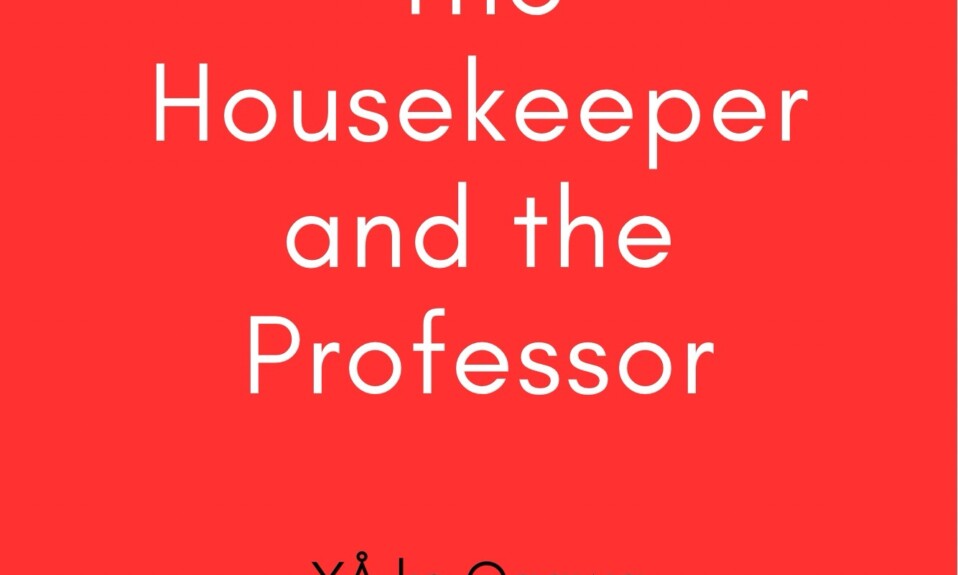
Overview: Beyond Numbers and Nostalgia
Yōko Ogawa’s The Housekeeper and the Professor (2003) is a tender exploration of memory, mathematics, and the fleeting yet profound bonds that define us. Set in 1990s Japan, the novel follows a housekeeper, her son Root, and a brilliant mathematician whose memory resets every 80 minutes due to a traumatic brain injury. Through their unlikely friendship, Ogawa weaves a story that transcends time, blending the precision of numbers with the fragility of human experience.
Chapter-by-Chapter Analysis
Chapter 1: The Fragility of Memory
- Plot & Themes:
The unnamed housekeeper begins working for the Professor, a reclusive mathematician whose memory lasts only 80 minutes. His jacket, pinned with notes to recall daily details, symbolizes memory as both anchor and illusion. - Key Symbol: The Professor’s notes externalize his fractured identity, contrasting with Root’s flat-topped haircut (“Root”), a nickname reflecting the Professor’s love for mathematical terms.
- Foreshadowing: The widow’s silent oversight hints at future conflict, while the Professor’s fixation on 1975—the year of his accident—underscores his trapped psyche.
- Literary Techniques:
Ogawa’s sparse prose mirrors the Professor’s fragmented memory, omitting names to emphasize universality. The atomic bomb reference (Hiroshima) subtly critiques societal amnesia.
Chapter 2: Mathematics as a Language of Love
- Plot & Themes:
The Professor bonds with Root through baseball statistics and prime numbers, teaching the housekeeper to see beauty in equations. Their trip to a Hanshin Tigers game becomes a turning point, blending joy and tragedy. - Conflict: The widow fires the housekeeper after the Professor falls ill, exposing societal rigidity vs. compassion.
- Symbolism: Baseball, with its reliance on stats, becomes a bridge between the Professor’s numerical world and Root’s childhood curiosity.
- Character Development:
The Professor’s humility (“everyone has something to learn”) reshapes the housekeeper’s view of education, sparking her later interest in math.
Chapter 3: The Legacy of Loss
- Plot & Themes:
Post-firing, the housekeeper juggles a taxing new job while nurturing Root’s academic growth. The Professor’s cookie tin of mementos reveals fragmented memories of his past, including a cryptic photo with the widow. - Key Theme: Zero—its mathematical paradox mirrors the Professor’s existence: a man both present and absent, whole yet fragmented.
- Irony: The widow, once cold, allows a farewell party, acknowledging the housekeeper’s irreplaceable role in the Professor’s life.
- Literary Techniques:
Ogawa uses the cookie tin as a metaphor for buried trauma, contrasting with the jacket’s temporary notes.
Chapter 4: Farewell and Continuity
- Plot & Themes:
The Professor moves to a care facility, but his influence endures. Root becomes a math teacher, embodying the Professor’s legacy, while the housekeeper cherishes their shared moments. - Symbolism: The Enatsu baseball card, transformed into a necklace, symbolizes enduring memory and the widow’s reluctant acceptance.
- Closure: The Professor’s final years, spent in fragmented joy, highlight Ogawa’s thesis: connection transcends time.
Thematic Deep Dive
- Memory as a Double-Edged Sword:
- The Professor’s 80-minute memory cycle critiques modern society’s selective amnesia, paralleling Hiroshima’s historical erasure.
- The housekeeper’s retrospection (“reverting to 1992”) reflects how trauma fossilizes moments, making them eternal.
- Mathematics as Metaphor:
- Prime numbers symbolize uniqueness; irrational numbers (like √2) represent the Professor’s unquantifiable humanity.
- Equations become a love language, bridging class and cognitive divides.
- Silent Sacrifices:
- The widow’s veiled grief and the housekeeper’s unpaid overtime critique societal undervaluing of caregiving, particularly women’s labor.
- Baseball and Belonging:
- The Hanshin Tigers symbolize nostalgia and cultural identity, anchoring the Professor to a pre-trauma self while fostering new bonds.
Why This Novel Resonates Today
- Alzheimer’s and Empathy: The Professor’s condition mirrors dementia, urging readers to see beyond cognitive decline to enduring humanity.
- Education Redefined: Root’s journey from student to teacher challenges elitist notions of knowledge, celebrating curiosity over credentials.
- Intergenerational Healing: The trio’s bond models how shared passions (math, baseball) can heal fragmented families and societies.
Final Takeaway:
The Housekeeper and the Professor is a quiet masterpiece, reminding us that life’s most profound equations—love, memory, legacy—are solved not with logic, but with heart.
Explore More:



